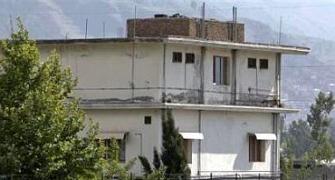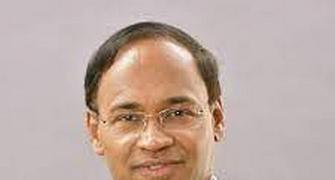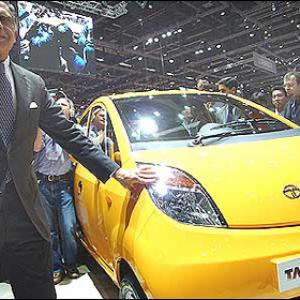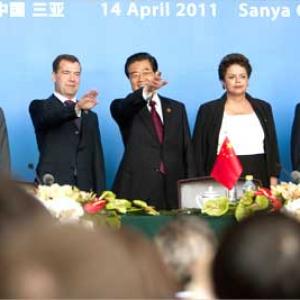Despite fighting rising prices and resultantly, facing the prospect of lower growth, the Indian economy should be able to absorb these inflationary shocks. But Gerard Lyons, chief economist and group head of research, Standard Chartered Bank, says that much will depend on monetary and fiscal policies undertaken.
But Gerard Lyons, chief economist and group head of research, Standard Chartered Bank, says that much will depend on monetary and fiscal policies undertaken.
India's finance minister last week said the country's gross domestic product (GDP) growth might slow if oil prices continued to remain at their current high levels. What is your assessment of the Indian economy?
India, indeed, like many other economies across the region has gone from very strong growth to what I would call more solid and sustainable rates of growth.
In that respect, it should not be a surprise if the growth rate in India this year is slightly slower than last year.
India, like China, needs to really address inflationary problems. I would say that they are more of a challenge in some of the property sectors in East Asia than they are in India, but when one looks at India, generally, there are a number of inflationary challenges that are apparent now.
That's why monetary policy needs to be tightened now and naturally, as monetary policy is tightened, it takes the heat off the economy.
How do you perceive the short-term risks to the Indian economy?
I see a general inflation problem across Asia, even though there is a need to differentiate across countries because there is an external price shock, in terms of food and energy prices.
That feeds inflationary pressures, and monetary policy needs to be tightened in response to that.
When high oil prices have hit the West in the past, they have often hit the West late in the cycle when the profit margins were low and monetary policy was already tight. Hence, in the West there is an association of high oil prices with recessions.
Now, the difference for India is that this inflation shock is hitting quite early in the cycle. Profit margins are high, there's a cushion (and) monetary policy is not excessively tight. So, the economy should be able to absorb the shock.
Also, there is a demand factor driving some of these price factors. The flip side of that is increased trade activity. That being said, it highlights some challenges: The need to address the whole food, fuel and fertiliser subsidies.
When I was in India during the Budget week, people were focusing very much on the 4.6 per cent budget deficit forecast for the next year. But there are other structural issues that need to be addressed sooner rather than later.
You have spoken earlier of the world heading towards the third super-cycle, which involves India. Can you elaborate on this?
We looked historically and found that there were two previous periods with similar characteristics to now.
One was the end of the 19th century, the emergence of America and the adopting of technology in the Industrial Revolution. The second cycle was after the Second World War with the emergence of Japan.
We are having the third similar cycle now: The emergence of India, China, Indonesia and other economies, and associated with that is lots of innovation and trade. Similar characteristics with what we saw before.
The reason for saying it is a super-cycle is to put things into perspective. It doesn't mean that everything goes up all the time.
If one looks at India, the outlook for this year and the next year would depend on the interaction between the fundamentals, policy and confidence.
The fundamentals are good. Policy is going to be a key driver, and that clearly depends on monetary and fiscal policy, which impacts confidence.
But you have clubbed India, along with Indonesia and other emerging economies, in the 'seven per cent club'. Can you explain this grouping?
The seven per cent club is about which economies are likely to grow by an average of seven per cent in the next decade. That seven per cent is a key characteristic because economies which grow by that much will double in size. So that's how we have clubbed them.
In fact, in the seven per cent club, there are five economies in Africa and five economies in Asia. The five Asian economies include Vietnam, Bangladesh, China, Indonesia and India. And maybe, Brazil and Russia will feature on the outside. This is a positive development.
But whichever club you put India in, the important thing is for policy to be set to suit domestic needs.
India, with respect to Southeast Asia, has a free trade agreement with Asean and is also negotiating agreements with most individual members of Asean. How do you view this strategy of greater economic integration with this region?
South Asia is the least integrated part of the world economy. When you look at openness, in terms of trade, the opportunity just abounds.
If you look back in the last decade, one of the big trade issues in Asia was how East Asia saw trade transformed by the opening-up of China.
In my view, the opening up of India could also have a transformational impact on trade in a broad area. In terms of increased trade within South Asia; increased trade flows between India and South Asia and the Middle East; between India, South Asia and East Africa; and between India, South Asia and Asean.
It is a positive opportunity.








